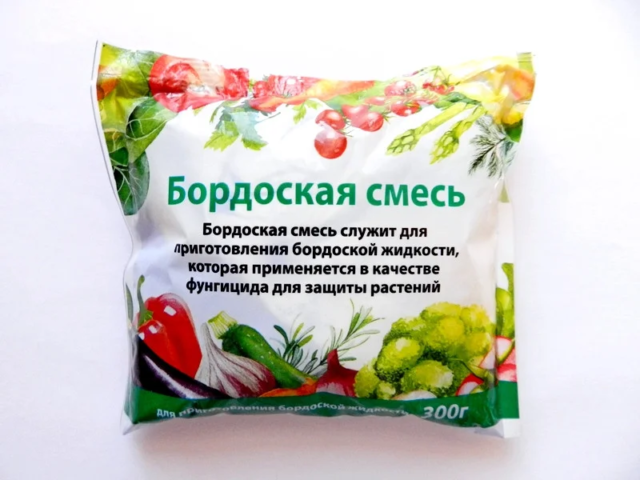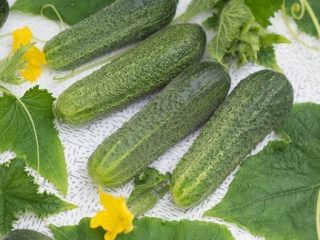Content
White rot on cucumbers is a dangerous fungal disease that can lead to significant yield loss. It appears especially often on bushes grown in greenhouse conditions. The main preventive measures are loose planting, compliance with watering norms and regular ventilation of the greenhouse. Treatment is carried out with drugs or folk remedies.
Reasons for appearance
White rot is a dangerous disease of cucumbers and other plants. This is an infectious pathology that is spread by marsupial sclerotia fungi (Sclerotinia sclerotiorum). Therefore, it is also called sclerotinia. Since sclerotia are found almost everywhere, the possibility of the disease cannot be completely excluded.
There are several factors that provoke the development of white rot of cucumbers:
- The wind is what spreads spores over long distances.
- Adding new soil may contain spores and mycelium of white rot, as well as other fungi.
- High air humidity - this factor is especially dangerous when growing cucumbers in a greenhouse.
- Night cold snaps and temperature changes weaken the plant and make it vulnerable to various diseases, including white rot.
- Using cold water, especially in hot weather, is where mushroom spores germinate well.
- Thickened plantings of cucumbers increase humidity. This also creates a favorable environment for white rot.
- Overseeding the cucumbers with dill, parsley and other crops, which also increase the planting density and, accordingly, provoke the spread of the disease.
Symptoms of the disease
White rot affects all parts of the cucumber except the roots. The main signs of the disease are:
- Numerous white spots on different parts of the stem, fruits and leaves: in appearance they resemble cotton wool.
- Plant tissues soften and become loose.
- Mucous growths appear from which drops flow.
- A white coating forms on the affected parts.
- The tops of the cucumbers die and wither.
- Black sclerotia are formed - fungal spores, which begin to spread further with the wind.

Cucumber trunk affected by white rot
As a result, the affected parts turn yellow and rot. They dry out, the fruits do not develop and die. All affected tissues begin to soften, which can lead to the death of the bush.
How dangerous is the disease?
The main danger of white rot is that it attacks cucumbers very quickly. As soon as a spore reaches the surface of a plant, it multiplies, parasitizing on it. As a result, leaves and fruits become massively covered with white spots.
Another risk factor is the exceptional fertility of the fungus.Even one spore is enough for the pest to begin to multiply. Therefore, the probability of defeat always remains quite high.
White rot spores are able to penetrate cucumber tissue through the pistil. Even if the cucumber bush has no mechanical damage (broken, scratched), it still runs the risk of suffering from the disease. Because white spots cover the fruit, it spoils quickly. The spores spread to neighboring plants, which threatens the loss of most of the crop.
How to treat and how to treat white rot on cucumbers in a greenhouse
White rot can be eliminated, but treatment should begin as early as possible. The infection spreads very quickly. For treatment, chemicals, biological fungicides and folk remedies are used.

To combat infection, Ordan and other fungicides are used
Chemical fungicides
Chemicals are highly effective, but they are often toxic to humans, animals, soil bacteria and beneficial insects. Therefore, treatment with such drugs is carried out only in advanced cases, as well as for prevention (it is enough to spray once). The main drugs against white rot of cucumbers are:
- “Ordan” is a low-toxic product (hazard class 3 for humans) with universal action. Helps cope with white rot and other fungal infections of cucumbers. At least five days must pass from the last treatment to harvest, the maximum permissible number of sprays per season is three.
- "Abika-Pik" is a drug against white rot, low-toxic for humans and bees (hazard class - 3). The waiting period from the last treatment to harvesting the cucumbers is at least 20 days. Three sprays can also be done per season.
- “Bordeaux mixture” is a universal preparation for white rot based on calcium hydroxide and copper sulfate. It is highly effective – it destroys fungal spores, including those in a dormant state. Toxic to humans (class 2). The waiting period before harvesting cucumbers is 15 days. The number of sprayings is a maximum of three per season.
- "Oxychom" is a low-toxic fungicide against white rot of cucumbers (hazard class for humans and bees - 3). It has a short waiting period - 5 days. At the same time, the maximum number of sprayings per season is also three times.
Treatment is carried out 2-3 times with an interval of 10 days. Spraying is best done in the late evening. If cucumbers grow in open ground, the event should be planned on days when the weather is dry and windless.
Biological method of treatment
During the fruiting period of cucumbers, it is better to use biological fungicides rather than chemicals to combat white rot. They contain colonies of bacteria that effectively destroy fungi. At the same time, such preparations are safe for plants, animals, and beneficial insects.

It is better to process cucumbers late in the evening.
Among the biofungicides are:
- "Gamair" is a non-toxic drug against white rot (hazard class 4 for humans). Treatments can be carried out up to 3 times per season, and there is no waiting period - the crop can be harvested immediately.
- "Alirin-B" is another non-toxic drug with similar characteristics. There is no waiting period, the number of treatments is up to 3 per season.
- "Planriz" is a bacterial preparation that is safe for humans, bees, and fish. There is no waiting period.
Treatment of white rot on cucumbers with folk remedies
Folk remedies for white rot of cucumbers show their effectiveness if the disease has not yet started. For treatment, prepare a paste to lubricate the affected stems, or a solution that is sprayed on all bushes (including healthy ones for prevention). The recipes are:
- Shavings of laundry or tar soap (3 tablespoons) are mixed with the same amount of wood ash. The result is a paste that is applied to the affected stems. In this case, the leaves are treated with other solutions. If they are badly damaged, they simply cut them off.
- Another method of treating white rot on cucumbers in a greenhouse is treatment with serum. To do this, you can take milk (1 l) and an alcohol solution of iodine (10 ml) per 10 l of water. It is also recommended to add 2-3 tbsp. l. laundry or liquid soap.
- A solution of baking soda with potassium permanganate. Both powders are measured in 8 tbsp. l., dissolve in 1 liter of water, add 1 tbsp. l. shavings of laundry soap and begin processing.
- Damaged cucumber stems are coated with a mixture of chalk, water (1:1) and fungicide.
Agrotechnical measures
Agrotechnical measures also help prevent the development of white rot of cucumbers. It is recommended to choose varieties that are resistant to this disease: Sportresisting, Improved Telegraph, Connie, Zozulya, Claudia.
At the same time, certain varieties, on the contrary, are vulnerable to sclerotinia. We are talking about varieties such as Farmer, Machaon, Regia, Graceful, Emerald and others.

Zozulya is one of the varieties resistant to white rot
Other agrotechnical measures include the following:
- Thinning of plantings - cucumbers are placed at a distance of at least 40 cm from each other. And if the growing method is horizontal (without tying a thread to the ceiling of the greenhouse and without installing supports), then the distance is taken with a margin of at least 60 cm.
- Timely destruction of rotten parts of cucumbers, including fruits. If the cucumber bush has suffered significantly, it needs to be dug up, taken away and burned.
- To prevent white rot, crop rotation should be observed - cucumbers should not be planted in beds where parsley or celery grew. These plants are vulnerable to sclerotinia.
- Creating optimal conditions for cucumbers - normal moisture, constant ventilation of the greenhouse, mandatory preventive treatment of cucumbers with fungicides or folk remedies.
Preventive measures
Preventing the development of infection is easier than treating cucumbers. To do this, experienced gardeners recommend taking several measures:
- Ventilate the greenhouse periodically, especially in hot weather when it rains (high air humidity).
- Water the cucumbers only with settled water (at least 12 hours).
- When growing cucumbers in a greenhouse, the top part of the soil, 20 cm deep, should be changed periodically. Moreover, before laying new soil, it is watered with a solution of fungicide or potassium permanganate (concentration 1%). After a few weeks, it should be treated with Azotobacterin or other bacterial fertilizer to restore the natural microflora.
- Monitor the watering rate. Cucumbers require good hydration, but you shouldn’t get carried away with water either. Watering is carried out once every 4-5 days. To ensure that the soil retains moisture longer, the plantings are mulched with hay, sawdust, peat or other material.
- Also, to prevent white rot, cucumber seedlings after transplanting into the ground should be treated with fungicides. Spraying is carried out every other week, and then as needed.
Conclusion
White rot on cucumbers spreads quickly, but it can be dealt with, especially if the spots are noticed at an early stage. If symptoms are detected, not only the affected bushes should be treated, but also neighboring plants.














